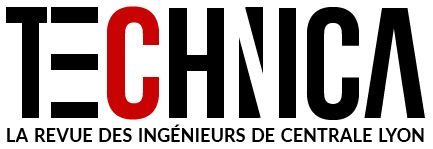
FISCAL REFORM OF PATENTS, AN OPPORTUNITY FOR FRENCH COMPANIES
Hélène Stankoff has written an article on “Fiscal reform for patents, an opportunity for French companies” published on 10 May 2019 in Technica, the newspaper for alumni of the Ecole Centrale de Lyon.
Fiscal reform for patents, an opportunity for French companies
Royalties drawn from the exploitation of patents and other intellectual property rights benefit from a reduced tax rate, encouraging innovation for French companies. To qualify, it is necessary for research and development costs to be incurred in advance on French territory in accordance with OECD requirements. And for the royalties earned to actually derive from technologies covered by eligible IP rights.
OECD and EU requirements
In France, which, for the last few decades, has implemented preferential taxation for income derived from the exploitation of patents and related rights, has had to revise the taxation applicable to patents to take into account the requirements of the OECD.
In order to take action against harmful tax practices, consisting of dissociating the territory of use from IP rights, to benefit from preferential tax conditions in the territory in which research and development expenditure has been made, the OECD then the European Union have required each state to make the preferential taxation granted to companies taxable in a particular state dependent upon R&D expenditure having been made on the territory of that same state.
This link or “nexus” is based on the concept of the fiscal advantage a company seeks in relation to the profits it makes from the exploitation of an intangible asset on the territory of the European Union must correlate with the expenses it has previously incurred on that same territory to develop that asset. A quotient or “nexus ratio” is thus calculated to weight the profits which could benefit from the preferential taxation.
The nexus ratio takes into account, in the numerator, the expenditure incurred by the company on national territory, and any expenses by companies not linked (with no economic link of dependency), for the creation and development of the intangible asset, and in the denominator, the entirety of the research and development expenditure incurred by the linked companies (subsidiaries for example) on the national territory or abroad.
The net taxable profit, calculated by the difference between the revenues accrued, through licensing or assignment of an asset for example, during a financial year by the company and the R&D expenditure associated with that asset during that same financial year, is then weighted by the nexus ratio to determine the net profit taxed at the reduced rate (set at 10% in France by the Finance Law of 2019).
The benefit of this preferential taxation is thus all the greater if the company (or fiscal group of companies) which draws income from the exploitation of its assets is the same as that possessing the R&D departments.
To qualify for such preferential taxation, a royalty stream (from assignment or licensing) must exist between the company that holds the intellectual property rights and a company that uses those IP rights.
However, this royalty stream must itself correspond to the actual exploitation of IP rights implemented in the licensed technologies.
The technologies covered by eligible IP rights
The 2019 Finance Law has modified the field of IP rights for which income from granting a license or assignment may be subject to a separate tax (at a reduced rate of 10% instead of 28% in 2019).
Thus, in addition to patents, utility models, (similar to patents, but granted by the French IP Office – INPI – without examination and having a term that has just been increased to 10 years (instead of 6 years) by the Pacte Law) and Supplementary Protection Certificates (which extend the term of patents beyond 20 years for pharmaceuticals and which require a Marketing authorization (MA) for their exploitation) are now included among the eligible IP titles.
Furthermore, software protected by copyright has also been added to the IP titles eligible for preferential taxation with regard to the products based on their exploitation. Such a measure was needed in the world of new technologies and the explosion of inventions implemented by computer in the field of artificial intelligence, mobile applications, the Internet of Things, etc.
On the other hand, the entitlement to this preferential taxation for inventions that are patentable (and thus not covered by the filing of a patent before the INPI) has been restricted both in relation to its implementation and to the companies concerned:
Thus, this “IP title” is only eligible for companies whose turnover does not exceed 50 million Euros and whose income from eligible IP rights does not exceed 7.5 million Euros per year (averaged over the last five years).
Furthermore, to qualify for the preferential regime for patentable inventions, it is now necessary for their patentability to be certified by the INPI: the conditions for obtaining such certification are not yet known and will be the subject of an implementing decree, but it is thought they will be similar to those applied by the INPI for the granting of a patent: the drafting of a description, possibly accompanied by drawings and diagrams, enabling the invention to be understood and claims defining the invention, filing of this document at the INPI and assessment by the INPI of the patentability criteria (novelty, industrial application and inventive step) to grant the certificate of patentability for fiscal use.
Thus, unless there is a particular reason for wishing to keep the invention a secret, the filing of a patent application is probably still the best way to couple the protection of research and development with fiscal advantage.
To conclude, it will be noted that the 2019 Finance law is more restrictive in the granting of the preferential taxation, requiring correlation on the same territory of research costs and revenues from IP, but is broader with regard to the IP titles eligible for such preferential taxation, hence including software protected by copyright, and for SMEs, inventions the patentability of which has been certified by the INPI.
The reduced tax rate, at 10%, although it is not the lowest in Europe, (for example it is 6.25 % in Ireland) should incite French company groups to keep their IP rights within French legal entities.
